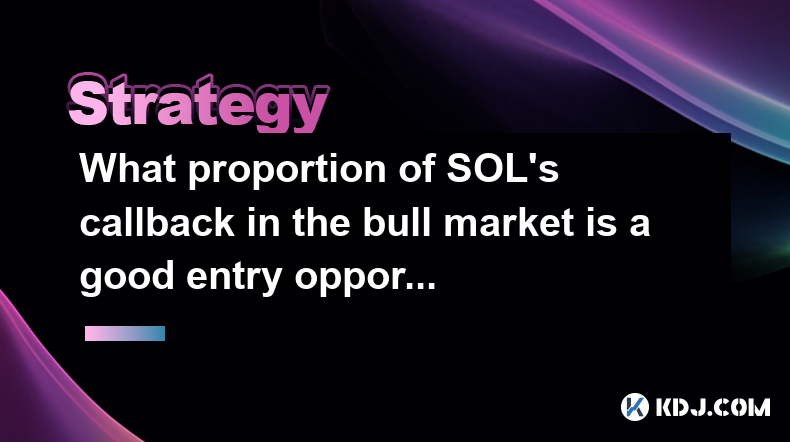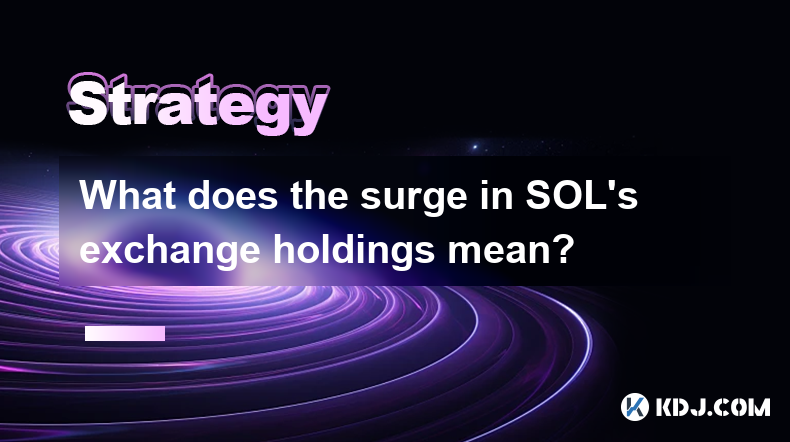-
 Bitcoin
Bitcoin $88,555.6766
1.18% -
 Ethereum
Ethereum $1,626.4043
-1.22% -
 Tether USDt
Tether USDt $0.9998
-0.01% -
 XRP
XRP $2.1018
-1.27% -
 BNB
BNB $605.8750
0.04% -
 Solana
Solana $140.3422
0.04% -
 USDC
USDC $0.9999
0.00% -
 Dogecoin
Dogecoin $0.1643
1.27% -
 TRON
TRON $0.2481
1.05% -
 Cardano
Cardano $0.6359
-1.63% -
 Chainlink
Chainlink $13.3216
-2.53% -
 UNUS SED LEO
UNUS SED LEO $9.1797
-2.79% -
 Avalanche
Avalanche $20.3681
-2.52% -
 Stellar
Stellar $0.2473
-4.43% -
 Sui
Sui $2.3043
2.50% -
 Shiba Inu
Shiba Inu $0.0...01257
-1.15% -
 Toncoin
Toncoin $2.9429
-3.48% -
 Hedera
Hedera $0.1738
0.16% -
 Bitcoin Cash
Bitcoin Cash $347.0587
1.49% -
 Hyperliquid
Hyperliquid $18.2576
-0.35% -
 Litecoin
Litecoin $79.8456
-0.89% -
 Polkadot
Polkadot $3.7809
-4.73% -
 Dai
Dai $0.9999
-0.01% -
 Bitget Token
Bitget Token $4.4439
-0.50% -
 Ethena USDe
Ethena USDe $0.9991
-0.01% -
 Pi
Pi $0.6313
-0.96% -
 Monero
Monero $216.2035
0.57% -
 Pepe
Pepe $0.0...08138
3.46% -
 Uniswap
Uniswap $5.3889
-1.68% -
 OKB
OKB $50.9281
-0.23%
How to use Bitcoin’s cross-market spread for arbitrage?
Exploiting Bitcoin's cross-market spread for arbitrage requires diligent monitoring, precise timing, and a tolerance for risk, but it can yield profitable opportunities during periods of high market volatility.
Feb 25, 2025 at 05:13 pm

How to Use Bitcoin's Cross-Market Spread for Arbitrage
Key Points:
- Arbitrage is a trading strategy involving buying an asset on one market and selling it on another at a higher price.
- Bitcoin's cross-market spread refers to the price difference between Bitcoin on different exchanges.
- Exploiting cross-market spreads for arbitrage requires precise timing, low fees, and a tolerance for risk.
Step 1: Identify a Cross-Market Spread
- Monitor multiple Bitcoin exchanges simultaneously using real-time data feeds or trading platforms.
- Identify a pair of exchanges with a significant price spread between the same underlying Bitcoin asset.
- Check that the spread exceeds transaction and withdrawal fees to ensure profitability.
Step 2: Establish Trades
- Execute a buy order for Bitcoin on the exchange with the lower price.
- Ensure that your order size is sufficient to cover fees and the spread margin.
- Simultaneously or immediately execute a sell order for the same amount of Bitcoin on the exchange with the higher price.
Step 3: Transfer Funds
- Withdraw the purchased Bitcoin from the lower-priced exchange.
- Deposit the withdrawn Bitcoin on the higher-priced exchange.
- Pay attention to any transaction fees associated with the withdrawal and deposit processes.
Step 4: Close Trades and Secure Profits
- Once the Bitcoin is deposited on the higher-priced exchange, execute a sell order to close your position.
- Collect the proceeds of the sale and transfer them to your desired wallet or account.
- Calculate your profit after subtracting all fees incurred during the arbitrage transaction.
Step 5: Monitor and Execute Repeatedly
- Arbitrage opportunities may arise frequently, especially during periods of high market volatility.
- Continuously monitor cross-market spreads and repeat steps 1-4 to capitalize on potential profits.
- Risk tolerance and market conditions should guide your trading frequency and position sizing.
FAQs
What is the best method to identify cross-market spreads?
- Utilize AI or machine learning tools designed for automated spread detection.
- Monitor multiple exchanges manually through real-time data feeds or trading platforms.
- Join cryptocurrency trading communities and forums for potential leads or arbitrage opportunities.
How can I minimize fees associated with arbitrage?
- Choose exchanges with low trading fees and withdrawal fees.
- Negotiate bulk discounts with exchanges for higher trading volumes.
- Consider using decentralized exchanges that offer lower fees for certain transactions.
What are the risks involved in Bitcoin arbitrage?
- Market volatility can result in unexpected price movements that affect profitability.
- Cross-market spreads can close rapidly, potentially leading to losses if trades are not executed quickly.
- System outages or delays can interrupt transfers and result in missed opportunities or losses.
Disclaimer:info@kdj.com
The information provided is not trading advice. kdj.com does not assume any responsibility for any investments made based on the information provided in this article. Cryptocurrencies are highly volatile and it is highly recommended that you invest with caution after thorough research!
If you believe that the content used on this website infringes your copyright, please contact us immediately (info@kdj.com) and we will delete it promptly.
- Bitget Exploited: Market-Maker Bot Glitch Triggers $100M Trading Frenzy, Turning $VOXEL into a Crypto Storm
- 2025-04-22 16:40:12
- MANTRA CEO John Patrick Mullin announces plans to burn 300 million OM tokens to stabilize market price after recent massive price crash.
- 2025-04-22 16:40:12
- What is Hyperlane? It is a framework for enabling interoperability among different blockchain networks
- 2025-04-22 16:35:12
- Mantra Burns 16.5% of Its Total Supply to Boost Staking Rewards
- 2025-04-22 16:35:12
- Why Is Polygon (POL) Price Up?
- 2025-04-22 16:30:13
- Can Cardano's Triangle Breakout Drive ADA Price Higher?
- 2025-04-22 16:30:13
Related knowledge

Can LTC buy the bottom after three consecutive negative weekly lines?
Apr 22,2025 at 04:36pm
The question of whether Litecoin (LTC) can buy the bottom after three consecutive negative weekly lines is a nuanced one, often influenced by various market factors, technical analysis, and sentiment within the cryptocurrency community. To delve into this, we need to consider the technical indicators, historical patterns, and the broader market context....

How to use trading volume to determine the buying and selling timing of BCH?
Apr 22,2025 at 04:14pm
Trading volume is a critical indicator that traders use to gauge the strength and direction of market trends, and it can be particularly useful when determining the buying and selling timing of Bitcoin Cash (BCH). By analyzing the trading volume, investors can gain insights into the market sentiment and make more informed decisions about when to enter o...

What proportion of SOL's callback in the bull market is a good entry opportunity?
Apr 22,2025 at 03:43pm
The question of what proportion of SOL's callback in a bull market represents a good entry opportunity is a nuanced one, requiring a deep dive into market dynamics, historical data, and risk management strategies. Let's explore this topic in detail. Understanding SOL and Bull MarketsSolana (SOL) is a high-performance blockchain platform known for its fa...

Can BCH's Willy indicator be bottomed out in the oversold area?
Apr 22,2025 at 02:56pm
Understanding the Willy IndicatorThe Willy indicator, also known as the Willy ratio, is a technical analysis tool used in the cryptocurrency market to assess the potential for a price reversal. It is calculated by dividing the current price of a cryptocurrency by its 200-day moving average. When the Willy indicator falls into the oversold area, it sugge...

What does the surge in SOL's exchange holdings mean?
Apr 22,2025 at 04:07pm
The recent surge in SOL's exchange holdings has sparked considerable interest and debate within the cryptocurrency community. SOL, the native token of the Solana blockchain, has seen a notable increase in the amount of tokens held on various cryptocurrency exchanges. This phenomenon can have several implications for the token's price, market sentiment, ...

What to do if SHIB's HODL wave indicator shows loose chips?
Apr 21,2025 at 03:07pm
If the SHIB's HODL wave indicator shows loose chips, it suggests that a significant portion of the SHIB holders are selling their tokens, potentially leading to increased volatility and a possible price drop. Understanding how to navigate this situation is crucial for any SHIB investor. This article will guide you through the steps to take when you noti...

Can LTC buy the bottom after three consecutive negative weekly lines?
Apr 22,2025 at 04:36pm
The question of whether Litecoin (LTC) can buy the bottom after three consecutive negative weekly lines is a nuanced one, often influenced by various market factors, technical analysis, and sentiment within the cryptocurrency community. To delve into this, we need to consider the technical indicators, historical patterns, and the broader market context....

How to use trading volume to determine the buying and selling timing of BCH?
Apr 22,2025 at 04:14pm
Trading volume is a critical indicator that traders use to gauge the strength and direction of market trends, and it can be particularly useful when determining the buying and selling timing of Bitcoin Cash (BCH). By analyzing the trading volume, investors can gain insights into the market sentiment and make more informed decisions about when to enter o...

What proportion of SOL's callback in the bull market is a good entry opportunity?
Apr 22,2025 at 03:43pm
The question of what proportion of SOL's callback in a bull market represents a good entry opportunity is a nuanced one, requiring a deep dive into market dynamics, historical data, and risk management strategies. Let's explore this topic in detail. Understanding SOL and Bull MarketsSolana (SOL) is a high-performance blockchain platform known for its fa...

Can BCH's Willy indicator be bottomed out in the oversold area?
Apr 22,2025 at 02:56pm
Understanding the Willy IndicatorThe Willy indicator, also known as the Willy ratio, is a technical analysis tool used in the cryptocurrency market to assess the potential for a price reversal. It is calculated by dividing the current price of a cryptocurrency by its 200-day moving average. When the Willy indicator falls into the oversold area, it sugge...

What does the surge in SOL's exchange holdings mean?
Apr 22,2025 at 04:07pm
The recent surge in SOL's exchange holdings has sparked considerable interest and debate within the cryptocurrency community. SOL, the native token of the Solana blockchain, has seen a notable increase in the amount of tokens held on various cryptocurrency exchanges. This phenomenon can have several implications for the token's price, market sentiment, ...

What to do if SHIB's HODL wave indicator shows loose chips?
Apr 21,2025 at 03:07pm
If the SHIB's HODL wave indicator shows loose chips, it suggests that a significant portion of the SHIB holders are selling their tokens, potentially leading to increased volatility and a possible price drop. Understanding how to navigate this situation is crucial for any SHIB investor. This article will guide you through the steps to take when you noti...
See all articles























































































